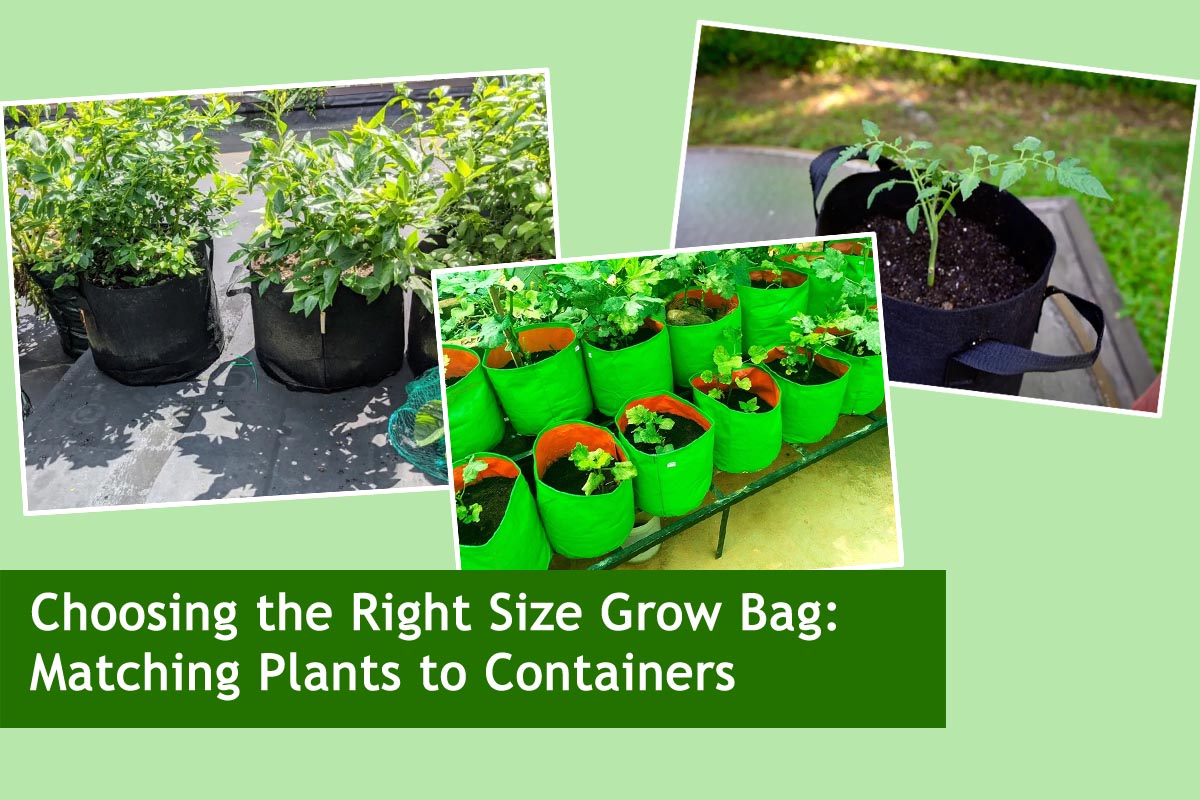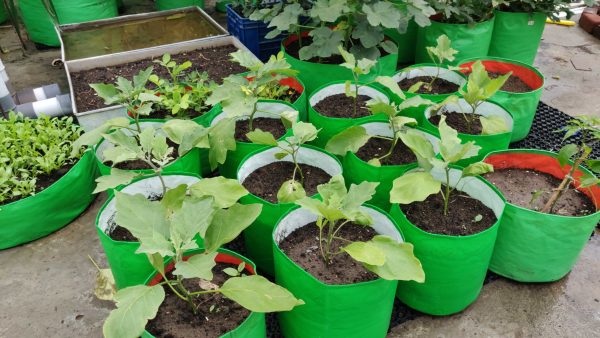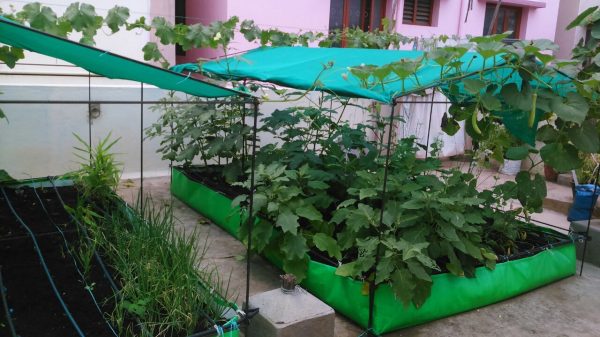
Choosing the Right Size Grow Bag: Matching Plants to Containers
Grow bags have become increasingly popular among gardeners due to their convenience, portability, and versatility. These fabric containers offer excellent aeration and drainage, promoting healthier root growth and ultimately leading to more vigorous plants. However, selecting the appropriate size grow bag for your plants is crucial for their success. In this guide, we’ll delve into the importance of matching plants to containers and provide insights into choosing the right size grow bag for different types of plants.
Understanding Grow Bag Sizes:
Grow bags come in various sizes, typically ranging from small (1-2 gallons) to extra-large (30+ gallons). The size of the grow bag directly impacts the root development, nutrient uptake, and overall growth of the plants. Choosing the correct size ensures that the roots have ample space to grow and access the necessary nutrients and moisture.

Factors to Consider:
Plant Type:
Different plants have varying root systems and growth habits. While some plants, like herbs and lettuce, have shallow root systems and can thrive in smaller containers, others, such as tomatoes and peppers, require larger containers to accommodate their extensive root structures.
Also Read This : Easy-to-Grow Varieties Perfect for Indoor and Outdoor Home Gardens
Growth Stage:
Consider the growth stage of the plant when selecting a grow bag size. Seedlings and young plants may initially require smaller containers but will eventually outgrow them. Opt for larger grow bags to accommodate the plant’s future growth without the need for frequent transplanting.
Space Availability:
Evaluate the available space for gardening. If you have limited space, choose compact varieties of plants or opt for smaller grow bags that can be arranged efficiently. Conversely, if space is not a constraint, larger grow bags offer more room for plants to flourish.
Also Read This : Keeping Your Croton Thriving: Essential Care Tips for a Vibrant Plant
Matching Plants to Containers:
Herbs and Leafy Greens:
Herbs like basil, parsley, and mint, along with leafy greens such as lettuce and spinach, thrive in small to medium-sized grow bags (1-5 gallons). These plants have shallow root systems and do well in compact containers, making them suitable for windowsills, balconies, or small gardens.
Tomatoes and Peppers:
Tomatoes and peppers are prolific growers with extensive root systems. Choose medium to large grow bags (5-15 gallons) to accommodate their growth. Indeterminate tomato varieties, which continue to grow throughout the season, benefit from larger containers that provide ample space for root development.
Also Read This : Reviving Yellowing Mogra Leaves: Unlock the Secret to Blossoming Beauty in Your Pot!
Root Vegetables:
Carrots, radishes, and other root vegetables require deeper containers to accommodate their taproots. Opt for deep grow bags or fabric pots (at least 10 inches deep) to allow these vegetables to develop fully. Ensure the grow bags have sufficient width for the root vegetables to spread out.
Fruit Trees and Bushes:
Dwarf varieties of fruit trees and bushy plants like blueberries and strawberries are well-suited for grow bags. Choose large to extra-large containers (15+ gallons) to accommodate the extensive root systems of fruit-bearing plants. Ensure the grow bags have sturdy handles for ease of movement, as these plants may require occasional repositioning for optimal sunlight exposure.

Also Read This : Pre and Post-Fertilization Rituals: Essential Steps for Optimal Plant Health
Benefits of Choosing the Right Size Grow Bag:
Healthy Root Development:
Adequate space promotes healthy root growth, ensuring efficient nutrient uptake and water absorption. Plants grown in appropriately sized grow bags are less prone to root-bound conditions and associated stress.
Optimal Plant Growth:
Matching plants to containers allows them to reach their full potential, resulting in robust growth and abundant yields. Plants grown in the right-sized grow bags are less likely to experience stunted growth or nutrient deficiencies.
Also Read This : Mastering Green Chilli Cultivation: Tackling 5 Common Issues at Home
Reduced Maintenance:
Choosing the correct size minimizes the need for frequent repotting or transplanting, saving time and effort. Well-sized grow bags provide a stable environment for plants, reducing the risk of moisture fluctuations and root damage.

Also Read This : Thriving from Trimmings: 7 Houseplants Propagated Easily from Stem Cuttings
Selecting the right size grow bag is essential for the success of container gardening. By considering factors such as plant type, growth stage, and space availability, gardeners can ensure that their plants have adequate room to thrive. Whether you’re growing herbs on your kitchen windowsill or cultivating tomatoes on your patio, choosing the appropriate size container sets the foundation for healthy, productive plants. Invest in quality grow bags that provide ample space for root development and watch your garden flourish.




